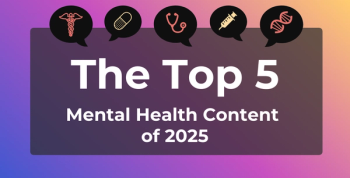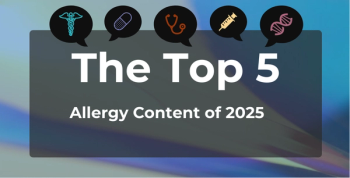
The Future of Drug Pricing: Most Favored Nation, PBMs, and Patient Access

During the Reshaping Rx: Navigating 2025 Drug Pricing Policies webinar, panelists discussed the Most Favored Nation executive order, bills aimed at pharmacy benefit managers (PBMs), and other drug pricing policies.
During a conversation on the Trump administration’s 2025 drug pricing policies, panelists discussed the implications of the Most Favored Nation (MFN) order, the broader context of drug pricing reforms, and efforts to address pharmacy benefit manager (PBM) reform through greater transparency. Watch the
Ryan Haumschild, PharmD, MBA, MS, CPEL, vice president of pharmacy at Emory Healthcare and Winship Cancer Institute, moderated the discussion on June 26 with:
- John O’Brien, PharmD, MPH, president and CEO at National Pharmaceutical Council
- Justin Favaro, MD, PhD, hematologist/oncologist at Oncology Specialists of Charlotte
- Kathy Oubre, MS, CEO of Pontchartrain Cancer Center
The webinar started with a discussion of President Donald J. Trump’s MFN executive order, which he
The goal of the MFN order is to lower the prices Americans pay for drugs and put those costs more in line with similar nations. This order focuses on all brand products without a generic or a biosimilar, making it broader than his 2020 order.
However, O’Brien pointed out that this is still an order, not an actual policy. With the midterms coming up, the president is likely looking to move fast, and drug pricing reforms are a winning conversation.
“…We don't have an actual policy, so we don't necessarily know what we're reacting to. We've just seen an executive order and something on the HHS website,” he said.
This new order also goes beyond Medicare Part B, which was the focus of the original order, Oubre noted, and potentially impacts private insurance as well. This broad scope could significantly impact patient access to care because practices will have to buy drugs at a higher price than they’ll be reimbursed for them.
“At some point the economics become impossible to keep the lights on,” Oubre said. “So, then, what's the plan for the patients if we're limiting their access or even taking away their access to providers who can administer the best treatments for their diseases?”
Another concern about the order is that the US does not use the quality-adjusted life-year the way other countries it’ll be compared with do, O’Brien said. The US currently typically gets earlier access to medications, which could go away with a formalized MFN policy. Policies like this could threaten America’s “ability to remain the global leader of research and development, and I don’t want to see that patient access in the United States interrupted,” O’Brien added.
About a week after the executive order was signed, HHS announced it had
The administration has also laid out the enforcement of MFN, starting with voluntary compliance and moving to aggressive action and rulemaking if there is no significant progress. However, it’s still broad enough for interpretation, Oubre said.
“If I were a manufacturer, [the lack of guidance] would really be giving me some pause, because you don't want to necessarily be the first one at the table, but…I'm not sure I'd want to be the last one,” she said.
O’Brien speculated that this order was more about trade and the middlemen, or PBMs, for the president. The executive order called for HHS to create a direct-to-consumer (DTC) sales model that would bypass PBMs, which could disrupt the traditional supply chain. Just understanding the actual cost of a drug can be complicated when taking into account rebates and other aspects of US health insurance.
“We no longer see drugs compete on what's the best one at the lowest cost,” O’Brien said. “It's now a high-list, high-rebate preference for the middlemen, and I think that's why patient out-of-pocket costs are what really matter, and that's what's driving pollsters telling politicians that drug pricing is something that they should be focused [on].”
However, despite the price benefits of a DTC model, there are clinical concerns that Oubre raised. In oncology, there are plans in place to address safe and appropriate handling of toxic oncology drugs, which may go missing from a DTC model. It’s unclear how a DTC model would filter through the health plan and how manufacturers would set up the logistics to move to such a model, she added.
Favaro echoed the concerns around chain of custody and the ability to make sure a drug is safe and delivered properly. Instead, there may be massive drug waste happening.
“I've had many patients this morning, and 2 or 3 of them didn't get treatment today because their counts were off,” he said. “And we don't have to waste that drug. We're going to store it for them and maybe use it for another patient.”
Other policies from the Trump administration impacting drug pricing include ones impacting the 340B program and site neutrality, all of which seem to be aimed at lowering patient out-of-pocket costs, O’Brien said.
PBM reform also has broad bipartisan support, and one tactic is to increase transparency for PBMs. This can mean different things to different people, Oubre said. Transparency may mean requiring PBMs to disclose spread pricing practices or rebate retention fees charged to pharmacists. It could be prohibiting a PBM from shifting patients to higher-cost drugs simply because they offer larger rebates.
There is also a lot happening at the state level, with more than 40 states having at least 1 PBM bill. She pointed to the
“[The states are] getting so frustrated by lack of meaningful reform at a federal level that they're basically taking matters into their own hands and trying to get something across the goal line for that subset of patients that they know state law will impact,” Oubre said.
What laws, like the Arkansas one, are trying to address is the vertical integration where a health plan owns a PBM and pharmacies, and they can choose the drug a patient gets and where they fill their prescription with an eye more toward profits than patient outcomes, O’Brien said.
“That, to me, isn’t good patient care, and I fear that yesterday’s rebates are today’s fees, and tomorrow it’s going to be something else, and this vertically integrated model is going to continue to evolve to the detriment of patients,” he said.
References
1. Bonavitacola J. Trump executive order could reduce pharmaceutical costs by 59%. AJMC®. March 12, 2025. Accessed July 11, 2025.
2. Trump administration announces prescription drug payment model to put American patients first. CMS. News release. November 20, 2020. Accessed July 11, 2025.
3. Joszt L. HHS sets pricing target for Trump’s Most Favored Nation drug price model. AJMC. May 20, 2025. Accessed July 11, 2025.
4. Reed T. Arkansas PBM law could spur lookalike restrictions. Axios. April 21, 2025. Accessed July 11, 2025.
Newsletter
Stay ahead of policy, cost, and value—subscribe to AJMC for expert insights at the intersection of clinical care and health economics.







































